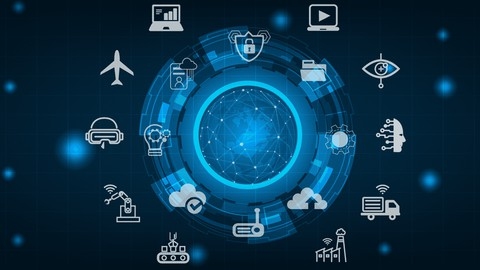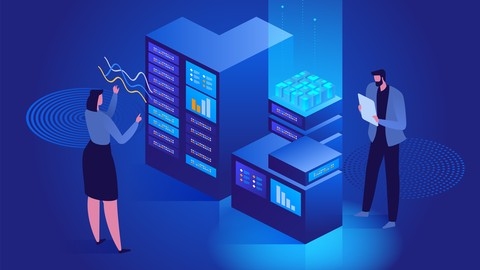Edge computing is rapidly transforming how we process and manage data, bringing computation closer to the source and enabling real-time insights.
By learning edge computing, you’ll gain a valuable skillset applicable across various industries, from IoT and autonomous vehicles to industrial automation and smart cities.
Understanding its principles empowers you to design, implement, and manage efficient and responsive systems that leverage the power of decentralized data processing.
Finding the right edge computing course on Udemy can be overwhelming, though.
The platform offers a vast array of options, each promising to unlock the secrets of this cutting-edge technology.
You’re searching for a course that balances theoretical understanding with practical application, offering hands-on experience and real-world examples to solidify your learning.
Based on our analysis, Edge Computing – A Complete Guide on Computing at the Edge stands out as the best course overall on Udemy for edge computing.
This comprehensive course covers everything from fundamental concepts and architectures to security considerations and real-world applications.
It provides a strong foundation for anyone looking to enter this exciting field.
However, if you’re seeking something more specialized or tailored to a specific industry, other excellent options are available.
Keep reading to discover our curated list of recommendations, catering to different learning styles, experience levels, and specific interests within the world of edge computing.
Edge Computing – A Complete Guide on Computing at the Edge
This edge computing course begins with the fundamentals.
You’ll learn what edge computing is, why it’s important in our increasingly connected world, and how it differs from cloud computing.
You’ll explore key terms and current market trends driving the adoption of edge computing, setting a solid foundation for deeper learning.
You’ll also discover the different forms of edge computing and the unique advantages it offers over traditional cloud solutions.
This initial phase ensures you grasp the core concepts and context of edge computing.
Next, you delve into the practical aspects of edge computing.
You explore how it works, examining specific architectures for implementing it, including the role of edge servers and devices.
You learn about the technologies underpinning edge computing, focusing on those used for implementation, offloading tasks, and accelerating processes.
The syllabus guides you through the process of building systems for edge computing and implementing edge analytics, empowering you to process data closer to its source.
You’ll understand how considerations like offloading and acceleration optimize edge computing performance.
The course then addresses the crucial security and privacy challenges inherent in edge computing.
You’ll learn about common vulnerabilities and how to mitigate them, ensuring the confidentiality and integrity of data processed at the edge.
This section specifically addresses privacy concerns in edge environments and teaches you best practices for implementing robust security measures.
You’ll gain a strong understanding of security and privacy challenges specific to edge computing, preparing you for real-world deployments.
Finally, you explore the diverse use cases of edge computing.
The course showcases real-world applications and explains how edge computing integrates with the Internet of Things (IoT) and 5G networks.
This practical application of concepts allows you to see how edge computing solves real-world problems in various industries.
You’ll leave the course with a practical understanding of how edge computing is applied, including its crucial role in the evolving landscape of IoT and 5G technologies.
Edge Computing : Master the Next Frontier of Computing
This course begins with the fundamentals of edge computing, explaining what it is, its benefits, and its various uses.
You’ll start with a foundational understanding, reinforced by quizzes to test your grasp of these core concepts.
The course then explores the challenges you’ll encounter in edge computing, equipping you with the strategies and best practices to overcome them.
This crucial step prepares you for real-world implementation by addressing potential obstacles and effective solutions.
You’ll then discover how edge computing transforms industries like banking, manufacturing, retail, automotive, and healthcare.
Through real-world examples, like ECG monitoring in healthcare or inventory management in retail, you’ll see how edge computing solves specific industry problems.
These examples provide concrete applications of the concepts, clarifying how edge computing principles are used in practice.
Quizzes throughout ensure you absorb the information effectively.
The course then shifts to practical implementation, introducing common industry tools and the concept of Multi-Access Edge Computing (MEC).
You will get hands-on experience implementing sensor data processing, using examples like a computer mouse, and even build an ECG monitoring system using edge computing.
You’ll explore technologies driving edge computing and leading vendors in the field, along with a glimpse into the future of Edge AI.
Finally, you’ll apply your knowledge in four Python-based projects.
You’ll tackle real-world problems by developing a temperature monitoring system (healthcare), a vehicle maintenance system (automotive), a production line monitoring system (manufacturing), and an inventory management system (retail).
These projects provide practical experience and build your portfolio.
Bonus lectures offer additional insights and value, enriching your understanding of edge computing further.
Edge Computing Essentials
This Edge Computing Essentials course begins with a foundational understanding of edge computing.
You’ll trace its evolution from traditional computing models, learning the key differences and advantages.
You’ll then explore how to optimize edge computing infrastructure and develop effective strategies for implementation.
This includes addressing common challenges and learning best practices to ensure smooth deployments.
The course equips you with the skills to design and refine your own edge computing systems.
You’ll then delve into the practical side, exploring common industry tools and platforms used in edge computing.
Case studies of successful projects provide real-world context, demonstrating how these tools are applied in practice.
You’ll gain a practical understanding of how edge solutions are implemented and the impact they have.
You’ll also learn about Multi-access Edge Computing (MEC), exploring its benefits and diverse applications.
This knowledge expands your understanding of the broader edge computing landscape.
Finally, the course examines the transformative impact of edge computing across various industries, including banking and finance, manufacturing, automobiles, and healthcare.
You’ll discover how edge computing addresses specific needs and challenges within each sector.
The course also covers crucial security and compliance considerations.
You’ll gain the knowledge to deploy edge computing solutions responsibly and securely, ensuring data protection and regulatory compliance.



